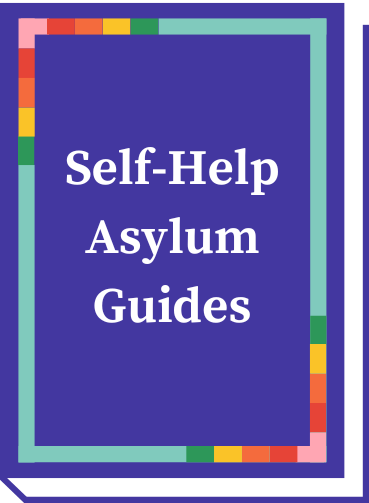6. Withholding of Removal
The information contained herein is for reference only and may not be up to date. It does not constitute legal advice. You should always consult an attorney regarding your matter.
Withholding of removal is an alternative form of relief for an individual fearing persecution in their country of origin.
Generally, applicants file an application for both asylum and withholding of removal at the same time on Form I-589. In order to be granted withholding of removal, the applicant must meet a higher standard than for asylum. Additionally, withholding can only be granted by an Immigration Judge (IJ), not by an Asylum Officer—so only if their case is referred to court from an affirmative application (see Chapter 25), or begins in defensive proceedings (see Chapter 26), will withholding of removal be on the table.
6.1 Withholding of Removal – A Higher Standard
An applicant has the burden of demonstrating that it is more likely than not that they will face persecution on account of a protected ground if returned to his country of origin. 1 Courts have held that the applicant must show that there is at least a 51% likelihood of suffering future persecution as compared to a likelihood of at least 10% in asylum cases. See Section #3.1.2. As in asylum law, however, if the individual can show that they suffered persecution in the past, then they benefit from a presumption of a well-founded fear of future persecution. Further, withholding of removal is mandatory if the individual meets the above clear probability test and establishes that he is not barred from eligibility as discussed below.
Withholding of removal is not subject to a one-year filing deadline and may be available for applicants who have been convicted of certain crimes that might bar them from asylum. In contrast to asylum, which is a discretionary form of relief, withholding is mandatory if the applicant meets the clear probability test set forth in Stevic.
In the case of Molathwa v. Ashcroft, the Eighth Circuit found that there was not enough evidence demonstrating that Molathwa, a gay man from Botswana who had missed the asylum filing deadline, would more likely than not be subject to persecution if returned to Botswana. 2 The Court determined that an isolated incident where the police entered Molathwa’s apartment without a warrant, the beating of a friend by relatives on the basis of his sexual orientation, and the incarceration for two days of a gay man who was caught engaging in sexual activity with another man did not amount to a pattern of harassment. On the other hand, in Matter of Toboso-Alfonso, 3 a gay Cuban man who had been forced to report regularly to the government and had been forced to attend a labor camp, did meet the heightened standard for withholding. Likewise, in Reyes-Reyes v. Ashcroft 4 the Ninth Circuit remanded the applicant’s case for further proceedings on the withholding and Convention Against Torture claims where the applicant had been kidnapped, beaten and raped by non-governmental actors and the government had turned a blind eye to the mistreatment.
An applicant who has won withholding of removal does not receive as many benefits as an asylee. The individual can seek work authorization; however, they will not be able adjust their status to become a legal permanent resident, nor can they become a citizen. Additionally, a winner of withholding of removal can never travel internationally, and does not have the ability to petition for derivative status for immediate relatives.
6.2 Bars to Eligibility for Withholding of Removal
Withholding of removal is unavailable to an applicant who:
- Is a persecutor; or
- Has been convicted of a particularly serious crime. 5 An aggravated felony conviction does not automatically bar an applicant from withholding of removal unless he received a 5-year or more sentence, imposed or suspended. An aggravated felony is presumed to be “particularly serious.” 6 Again, other crimes not rising to the level of an aggravated felony may also bar an individual from withholding of removal if found to be particularly serious. 7
In determining whether a crime is particularly serious, the court will look at:
- the nature of the crime, i.e. was it against a person or property;
- the circumstances surrounding the crime;
- the length of the sentence; and
- whether the crime indicates dangerousness to the community. 8
This Manual is intended to provide information to attorneys and accredited representatives. It is not intended as legal advice. Asylum seekers should speak with qualified attorneys before applying.
Notes:
- INS v. Stevic, 467 U.S. 407 (1984).
- Molalthwa v. Ashcroft, 390 F.3d 551, 554 (8th Cir. 2004).
- 20 I. & N. Dec. 819 (B.I.A. 1990).
- 384 F.3d 782 (9th Cir. 2004).
- Matter of S-S-, Int. Dec. 3374 (BIA 1999) and Matter of Frentescu, 19 I. & N. Dec. 244 (BIA 1982).
- See INA §241(b)(3)(B).
- A non-exhaustive list of aggravated felonies includes: murder; rape; drug trafficking; certain firearms offenses; money laundering or crimes of fraud for amounts over $10,000; crimes of violence for which the term of imprisonment is at least one year; theft or burglary for which the term of imprisonment is at least one year; chid pornography offenses; racketeering and gambling certain prostitution offenses; and certain alien smuggling offenses. INA §101(a)(43).
- Matter of S-S-, supra; Matter of Frentescu, supra.
The information contained herein is for reference only and may not be up to date. It does not constitute legal advice. You should always consult an attorney regarding your matter.
This handbook is intended for use by pro bono attorneys and immigration attorneys working on LGBTQ/HIV asylum cases.
Detention Hotline
If you are in detention, call:
(917) 654-9696 | M-W 9:30 - 5:30pm & Th 1:00 - 5:30pmCalls from people outside of detention will not be accepted.
